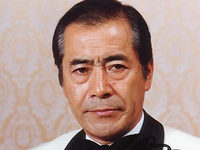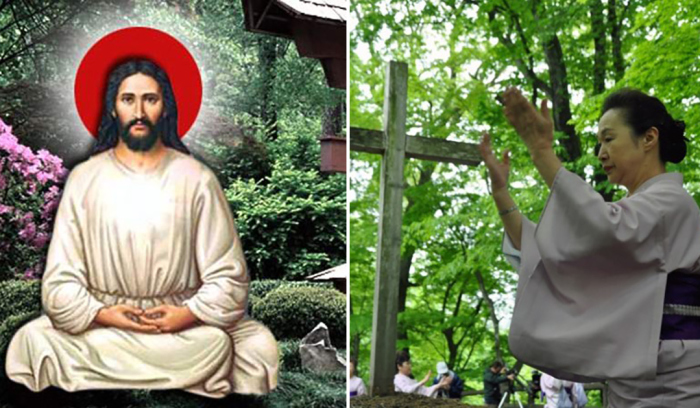THEORIES OF “NIHONDZINRON” IN JAPANESE BILLS
 In the near future, the Japanese government plans to put into circulation new-type banknotes with new “faces.” Gradually, such money will supersede the existing banknotes of the 1984 model. An interesting feature of Japan is that the banknotes depict the “nichondzinron” theorists [I], great enlighteners, people who made a huge contribution to the formation of the Japanese worldview during the Meiji period.
In the near future, the Japanese government plans to put into circulation new-type banknotes with new “faces.” Gradually, such money will supersede the existing banknotes of the 1984 model. An interesting feature of Japan is that the banknotes depict the “nichondzinron” theorists [I], great enlighteners, people who made a huge contribution to the formation of the Japanese worldview during the Meiji period.
Why aren’t banknotes, for example, the first Minister of Finance of this period or the first president of the First National Bank? After all, these people had to re-create the financial system of Japan according to the Western model. “According to the results of the American trip, Deputy Minister of Finance Ito Hirobumi [II] proposed urgent reforms in the financial sphere, namely, to pass a law on the issue of government securities, create modern banks, and establish money circulation” [8, p.186] Why not visible politician or military leader? Perhaps because serving the idea of enlightening one’s people is of the highest value. Is it not symbolic that the eminent theoreticians of the Nihondzinron, whose entire activity was dedicated to strengthening national self-esteem, are always with their people: a banknote of 10,000 yen – Fukuzawa Yukichi, a banknote of 5,000 yen – Nitobe Inazo, a banknote of 1,000 yen – Natsume Soseki.
Nihondzinron, or the theory of the Japanese, made itself known in a loud voice during the Bakumatsu period, marked by a crisis of political power. A surge of national self-consciousness usually falls on times that are disturbing for the people, when outside interference serves as an impetus for re-evaluating themselves. [III] This period was marked by the confusion of Japanese society. It became obvious that the military government of the “bakufu” was not able to control the objective process of “opening” the country, that Japan was weak economically, politically and militarily in the face of Western “barbarians”. At this time, nationalist tendencies were intensifying with an openly negative connotation directed against foreigners. The ideological support of the negative attitude towards strangers was the popular movement under the slogan “sonnjo” (“veneration of the emperor and the expulsion of barbarians”).
Gradually after the Restoration of imperial power in 1868, the mood in society changed to the exact opposite – a flood of westernization swept the country. A distinctive feature of this phenomenon is its comprehensive nature. In an attempt to be like foreigners, the Japanese excelled themselves. They were not limited to ideas to abolish hieroglyphic writing. They imitated everything, starting with the cut of the dress and ending with the state structure: “It seems that they would agree to walk naked in Ueno Park, if only the Europeans did that!” [7, p.12].
There was a time when those who did not accept fashion trends of Europeanization were not accepted in society, scoffed at those who did not dress in European dress. “The appearance of the Japanese was changing: clothes, shoes, hairstyles. In 1872, the emperor and his entourage put on European clothes for the first time … Perhaps the Japanese government believed that, having changed clothes and changing their hairstyles, it would be easier to convince foreigners that that Japan has already become a civilized country “[3, p. 117].
But it was not only the appearance of the Japanese that was changing, but the idea, especially about ourselves, was changing. Not only cut dresses were brought to Japan, but also works on philosophy, political science, etc. It is easy to imagine how difficult it was to process and accept philosophical and worldview terms, concepts, theories that were alien in origin. The confusion of the Japanese enlighteners and the attempt to reconcile the traditional and the newcomer from outside was indicated, for example, by the evidence that attempts were made to create a synthesis of philosophical ideas, for example, Nietzsche and Nichiren [IV], or a synthesis of the ideas of Buddha, Confucius, Socrates and Kant [V].
The Japanese understood everything that came to them from the West, through the prism of their traditional perception of the world. So, they understood differently, drew their conclusions and were guided by their own logic, sometimes not clear to the European. A teacher at the University of Tokyo, Frenchman Dumolar, remarked: “… this obstacle (in thinking – author’s comment) depends on the fundamental difference in the thinking of Japanese and Europeans. All Western nations have one and the same mythology, a common supply of ideas received by them from Egypt, Greece and Rome, the Christian religion and the general political and social evolution, passed by all the peoples of the West almost the same “[5, p.200].
There is a clash of civilizations, philosophical systems, but at the same time there is a huge desire and desire of the Japanese to avoid the fate of the colonial country. On the one hand, it was clear that the industrial potential of Japan could not be compared with the strong states of that time, and on the other, the Japanese were afraid to lose themselves in pursuit of reaching the level of civilized countries.




